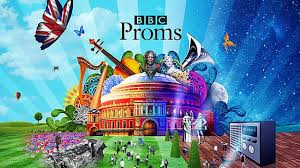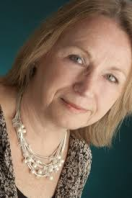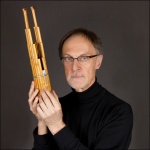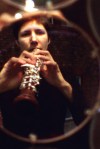The announcement of the new Proms season always heralds a pot pourri of contemporary music, about which we’re always excited here at Tokaido Road Towers; here’s a brief overview of new music that will be coming to this year’s season.
One of the fathers of American Minimalism whose music appears at this year’s season (the other being Steve Reich), Prom 63 includes John Adams’ blink-and-you’ll-miss-it Short Ride In A Fast Machine, together with the UK premiere of the new Saxophone Concerto, from the BBC Symphony Orchestra under Marin Alsop.
Sally Beamish‘s Violin Concerto is being given its London premiere (does that term really mean anything, I ask myself…) in Prom 20 together with music by Gurney and Walton.
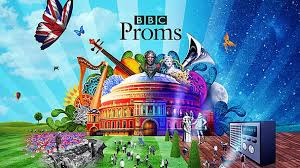 Berio’s sonic collage of Western music, Sinfonia is part of Prom 26 from Semyon Bychkov, which also includes Shostakovich Symphony no.4.
Berio’s sonic collage of Western music, Sinfonia is part of Prom 26 from Semyon Bychkov, which also includes Shostakovich Symphony no.4.
The music of Birtwistle features several times in celebration of his eightieth year – Night’s Blackbird in Prom 18 together with Mahler 5, Endless Parade is on the programme at Prom Saturday Matinee 2 (plus Maxwell Davies), Sonance Severance 200 Prom 33 with the National Youth Orchestra in an exciting programme that includes Lutoslawski’s Concerto for Orchestra and the 1911 version of Petrushka. The Proms Saturday Matinee no. 4 is a profile of Birtwistle with Exaudi and BCMG under Knussen, and Prom 72 focuses on English music, with his Exody alongside Walton and Vaughan Williams.
Chinese composer Qigang Chen features in Prom 2 as the China Philharmonic makes its Proms debut with Chen’s Trumpet Concerto, Joie eternelle.
Unsuk Chin’s Šu for sheng and orchestra appears in in Prom 55.
Also celebrating his eightieth year is Sir Peter Maxwell Davies: his Sinfonia is a part of Prom Saturday Matinee 2; the suite from Act 2 of the ballet Caroline Mathilde plays in Prom 35; Symphony 5 partners Sibelius 2nd Symphony in Prom 38; Max is given his own Composer Portrait in Proms Saturday Matinee 3 by the London Sinfonietta and Sian Edwards which includes his scintillating Mirror of Whitening Light, whilst Prom 70 is a Birthday Concert.
Jonathan Dove‘s Gaia appears in Prom 15 in a programme of Mozart and a complete performance of Ravel’s shimmering Daphnis et Chloé.
Francesconi dances with the Devil as his Duende – The The Dark Notes comes to Prom 28 alongside Stravinsky’s monumental Oedipus Rex.
Helen Grime‘s Near Midnight receives its London premiere at Prom 31.
Gavin Higgins’ Velocity, is a new commission to launch the Last Night.
The premiere of Simon Holt’s Flute Concerto, Morpheus Wakes flavours Prom 14 together with Ravel’s titanic evocation of orchestral destruction, La Valse, and Duruflé’s colourful Requiem. There’s also the scintillating surfaces of David Horne‘s Daedalus in Flight in its London premiere in Prom 10.
Prom 40 presents two new works, Benedict Mason‘s Meld along with Dobrinka Tabanova’s Spinning a Yarn from the Aurora Orchestra.
Roxanna Panufnik is present in her Three Paths to Peace, in Prom 4 with Gergiev.
Gabriel Prokofiev’s Violin Concerto, Prom 16 is one of many works this year commemorating First World War.
Minimalist fanatics (amongst which I count myself) will be appeased by the Late Prom 37, featuring the music of Steve Reich in a chamber version of his Desert Music, and It’s Gonna Rain.
The late Sir John Tavener is commemorated in three concerts; his Gnosis at Prom 7 , Ikon of Light and Requiem Fragments in Prom 25 from the Tallis Scholars and the Heath Quartet , whilst his enduringly-popular Song for Athene will add an emotional touch to the Last Night.
Pianist wünderkind Benjamin Grosvenor will give the premiere of Judith Weir‘s Day Break Shadows Flee in Proms Chamber Music 7.
A two-day residency by the Cleveland Orchestra celebrates the music of Jörg Widmann, his Flute en suite at Prom 68, and Teufel Amor in Prom 69.
The second Chinese composer coming to this year’s Proms, Zhou Long’s piano concerto, Postures, comes to Prom 61.
Elsewhere, there’s music by Laura Mvala, Dave Brubeck, the Pet Shop Boys and the usual crowd-pleasers from the Classical Canon; looking forward to a very musical summer this year…

